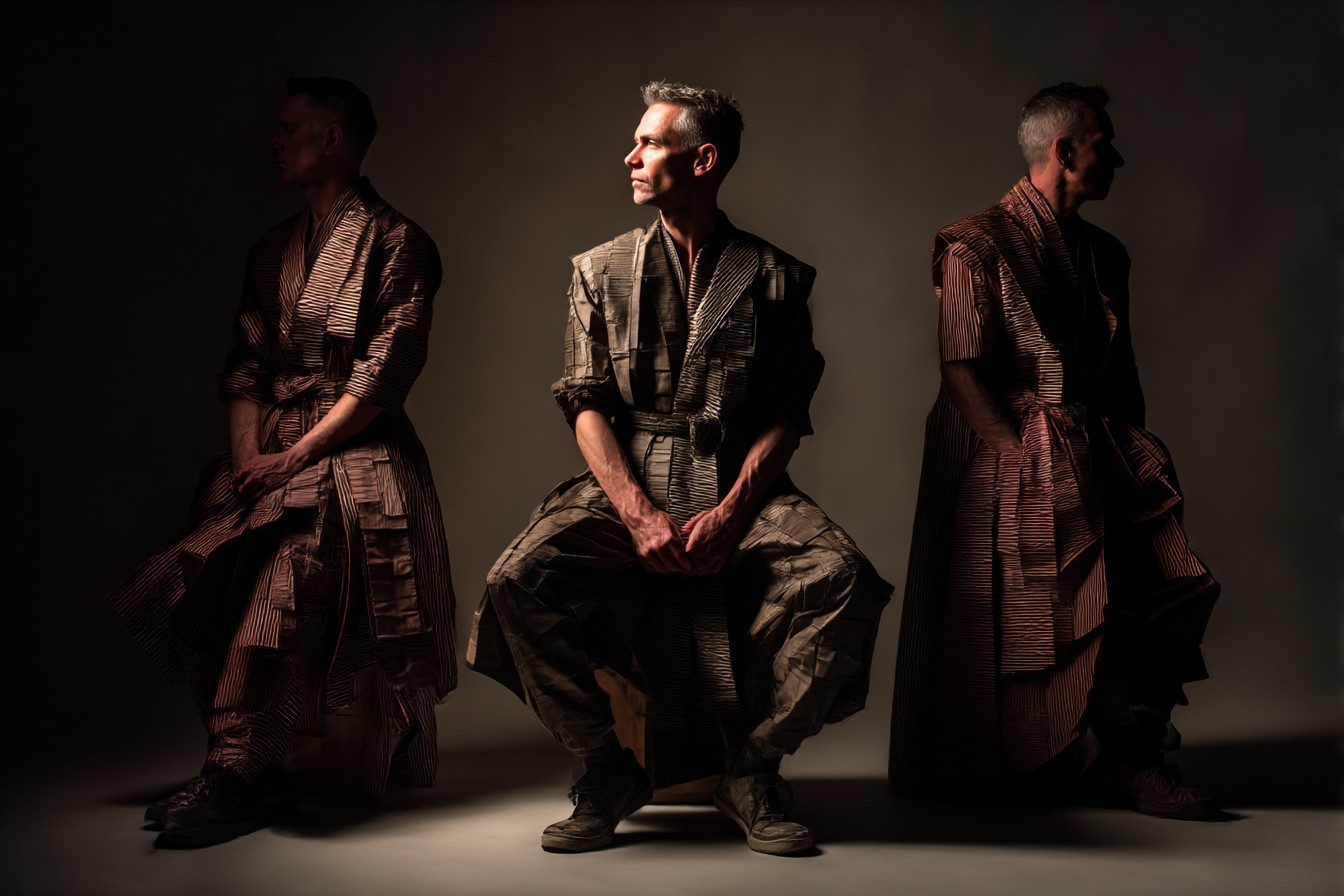I have a navy cashmere sweater that cost me $320 back in 2011. At the time, it felt wildly extravagant—I’d just started at Style Authority, was making approximately nothing, and subsisted primarily on ramen and the occasional free canapé at fashion events. But I’d been eyeing it for months, knew exactly how I’d wear it, and finally pulled the trigger during an end-of-season sale.

Last week, I was organizing my winter clothes when I realized something: that sweater has been worn at least 30 times every single winter for twelve years. That’s a minimum of 360 wears, which works out to roughly 89 cents per wear. Meanwhile, the fast-fashion henley I impulse-bought last month for $24.99 developed a hole after the third washing and now sits in my drawer as an expensive dust rag. Cost per wear? About $8.33, and rising with every day it goes unworn.
This, my friends, is the essence of the “30 Wears Test”—a deceptively simple concept with profound implications for both your wallet and the planet.
The idea originated with Livia Firth (Colin’s wife and a sustainability advocate) and is almost too straightforward: before buying something, ask yourself, “Will I wear this at least 30 times?” If the answer is no, don’t buy it. That’s it. No complex calculations, no spreadsheets tracking the ethical supply chains of bamboo fibers—just a gut-check question that forces you to confront your actual wearing habits versus your aspirational fashion self.

For me, the 30 Wears Test was a revelation, mainly because it quantified something I’d felt intuitively but hadn’t articulated. I have long been both a style enthusiast and someone perpetually stressed about environmental issues—two interests that can feel fundamentally at odds. The fashion industry is notoriously problematic from an environmental standpoint. It’s responsible for about 10% of global carbon emissions, is the second-largest consumer of water, and generates truly horrifying amounts of waste. Roughly 85% of all textiles end up in landfills each year. Let that sink in—the vast majority of clothing produced ultimately becomes trash.
Yet here I am, writing about clothing for a living, participating in an industry built on convincing people they need new things seasonally, and personally owning more jackets than any reasonable human requires. The cognitive dissonance can be overwhelming. I’ve spent years looking for ways to reconcile my love of style with my desire to not, you know, actively contribute to environmental collapse.
Enter the 30 Wears Test, which hits the sweet spot between puritanical abstention (not buying anything new ever) and mindless consumption. It acknowledges that yes, we will buy clothes—but we can be much more intentional about it.

I started applying this test seriously about five years ago, and it’s transformed how I approach purchasing. That oxford cloth button-down I’m eyeing? Easy 30 wears—it’ll work with practically everything I own. Those lavender corduroy trousers that look amazing but would require special outfit consideration each time? Probably not making it to 30. That statement jacket that would absolutely kill on Instagram but might be painfully memorable in regular rotation? Hard pass.
The test is remarkably clarifying once you start using it honestly. And that’s the trick—you’ve gotta be brutally honest with yourself about your actual lifestyle, not the fantasy lifestyle you imagine while scrolling through #menswear accounts at midnight.
I learned this lesson the hard way with what I now call the “Architect Pants Incident of 2018.” I fell in love with these wide-leg, heavy cotton twill trousers that had a very specific Japanese-workwear-meets-Scandinavian-minimalism vibe. They looked incredible on the model, who clearly spent his days thoughtfully examining blueprints in a sun-drenched studio while drinking perfect pour-over coffee. I convinced myself these pants would somehow transform me into that guy, despite the fact that I work in an open office under fluorescent lights, spill coffee with alarming regularity, and have a job that occasionally requires me to look somewhat conventional for client meetings.

Those pants? Worn exactly four times. Cost per wear: a painful $37.25. They now live in the back of my closet as a $149 reminder to buy for my actual life, not my imaginary one.
The sustainability implications of the 30 Wears approach go beyond just buying less stuff. When you’re committed to wearing something dozens of times, quality suddenly matters much more. A shirt that looks great on day one but falls apart after five washes is a terrible investment both financially and environmentally. This naturally pushes you toward better-made items, which typically come from brands with more ethical production practices. Not always, of course—plenty of luxury brands have questionable supply chains—but there’s generally at least some correlation between price point, quality, and company values.
The test also encourages versatility and classic styling over trendy statement pieces. If something needs to work in regular rotation for years, it probably can’t scream “Spring 2023!” It needs to play well with the rest of your wardrobe and not feel dated after a single season. This doesn’t mean boring—it means thoughtful.

I’m not perfect at this by any means. I still occasionally buy something knowing it’ll never hit 30 wears—usually because I need it for a specific event or work assignment. Last year I needed a tuxedo for a black-tie industry event where I was presenting an award. Could I have rented one? Sure. But given my job and the likelihood of future formal events, owning made more sense. Will it hit 30 wears quickly? No. But over a decade? Absolutely.
The 30 Wears principle has unexpectedly improved my style beyond just the sustainability benefits. By focusing on versatile, quality pieces, I’ve developed a more coherent wardrobe of items that work together in multiple combinations. My getting-dressed time has decreased dramatically because nearly everything I own can be worn with multiple other pieces. The paradox of choice—that paralysis you feel staring at a closet full of clothes while thinking “I have nothing to wear”—has largely disappeared from my mornings.
It’s also saved me serious money, despite the fact that my average price per item has increased. I buy fewer things but wear them more frequently and keep them longer. That $320 cashmere sweater from earlier? Still going strong. Meanwhile, I have a depressing mental catalog of $40-$60 fast-fashion items that didn’t survive a year.

Applying the 30 Wears Test practically requires a few supporting habits. First, I’ve become religious about proper garment care. Quality clothes treated badly still deteriorate quickly. I’ve learned to hand-wash my sweaters, invested in proper cedar hangers, discovered the transformative power of a good steamer, and finally figured out which items actually need dry cleaning versus which can be carefully hand-washed (hint: it’s fewer than you think).
I’ve also embraced repairs in a way I never did before. My cobbler knows me by name. I’ve learned basic darning to fix small holes in knitwear. I’ve had jackets relined, buttons replaced, and areas reinforced before they become problematic. Fifteen years ago, I would have considered a rip or significant wear as the end of a garment’s life. Now I see it as an expected maintenance issue, like changing your car’s oil.
The 30 Wears approach has spillover benefits too. Once you start thinking this way about clothes, you naturally begin applying it to other purchases. Will I use this kitchen gadget 30 times? Will this furniture last through multiple apartments? The mindset shift from consuming to investing becomes surprisingly contagious across different areas of life.

I’m not suggesting this is a perfect solution to fashion’s sustainability problem. The industry needs systemic changes in how materials are sourced, how workers are treated, and how production is powered. But while we push for those macro changes, the 30 Wears Test gives us a practical tool for making better micro decisions day to day.
For guys specifically, I think this approach solves a common problem. Many men I know want to dress well but feel overwhelmed by the constant churn of trends and the paradoxical pressure to care about your appearance but not seem like you care too much. The 30 Wears mindset cuts through that noise with a brutally practical question: “Will I actually wear this regularly?” It’s clarifying in a way that trend reports and seasonal must-have lists aren’t.
Of course, sustaining this approach requires resistance to what I call the Fashion Industrial Complex—that entire ecosystem designed to make us feel perpetually inadequate about what we already own. I’ve had to unfollow certain accounts and publications that triggered my worst impulse purchasing. I’ve learned to recognize when I’m being marketed to under the guise of editorial content. And I’ve gotten comfortable with the fact that I will sometimes be slightly out of step with the bleeding edge of trends—a reasonable trade-off for a more sustainable, financially sound approach.
The funny thing is, this approach has actually made me better at my job. When I recommend products now, I evaluate them through this lens: “Would I personally wear this 30 times?” If not, I don’t suggest it to readers. This has made my recommendations more authentic and practical, which readers seem to appreciate. The guys who follow my work don’t want to be fashion victims or walking trends—they want to build wardrobes that work for their actual lives while avoiding both financial and environmental waste.
So before your next purchase, pause and ask yourself the question: “Will I wear this 30 times?” Be honest. Consider your real life, not your aspirational Instagram self. Think about what you already own and whether this new item will integrate seamlessly. Calculate the true cost per wear. And maybe, just maybe, put it back on the rack if the answer is no.
Your wallet will thank you. The planet will thank you. And ironically, your style will likely improve in the process. Because nothing looks worse than buyer’s remorse hanging in your closet, silently judging you every morning at $37.25 per wear.



